Blue Origin's Lunar Lander: A Photo Tour
Meet Blue Moon!
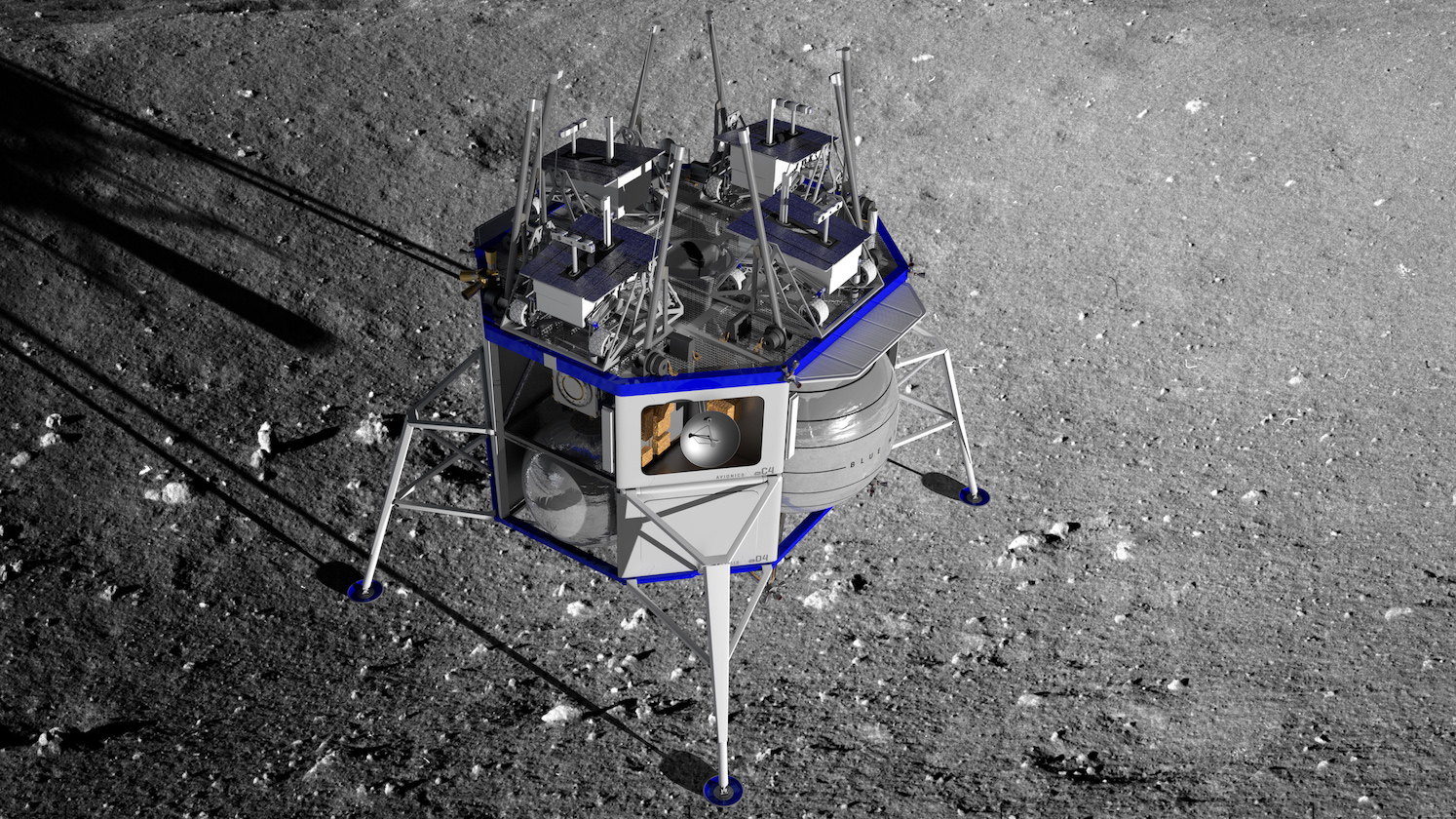
Meet Blue Moon!
The private spaceflight company Blue Origin is building a new lunar lander named Blue Moon. Blue Origin's founder Jeff Bezos revealed the first life-size mockup of Blue Moon on May 9, 2019 after the company spent three years working on the design.
Click through this gallery to see photos of the grand reveal and images from a simulation of a Blue Moon mission to the lunar surface.
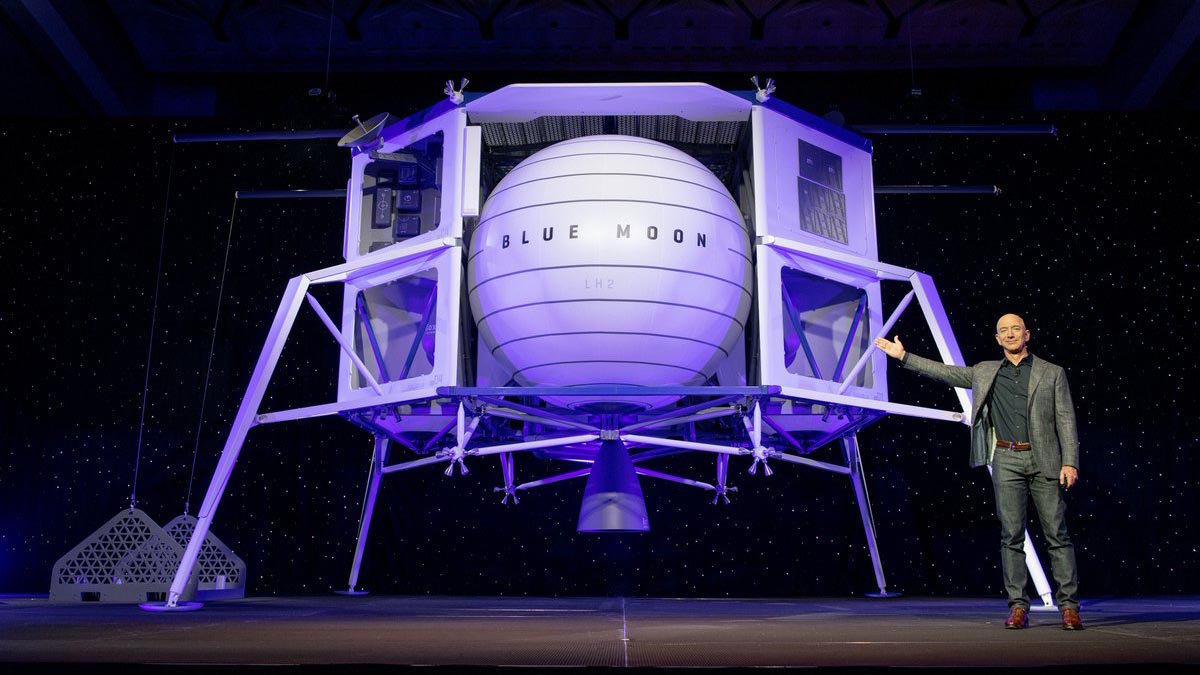
The Grand Reveal
Blue Origin founder Jeff Bezos — who is also the founder of Amazon.com and the richest man in the world — unveils the first model of the Blue Moon lunar lander in Washington, D.C. on May 9, 2019.
Full Story: Blue Origin Unveils 'Blue Moon,' Its Big Lunar Lander
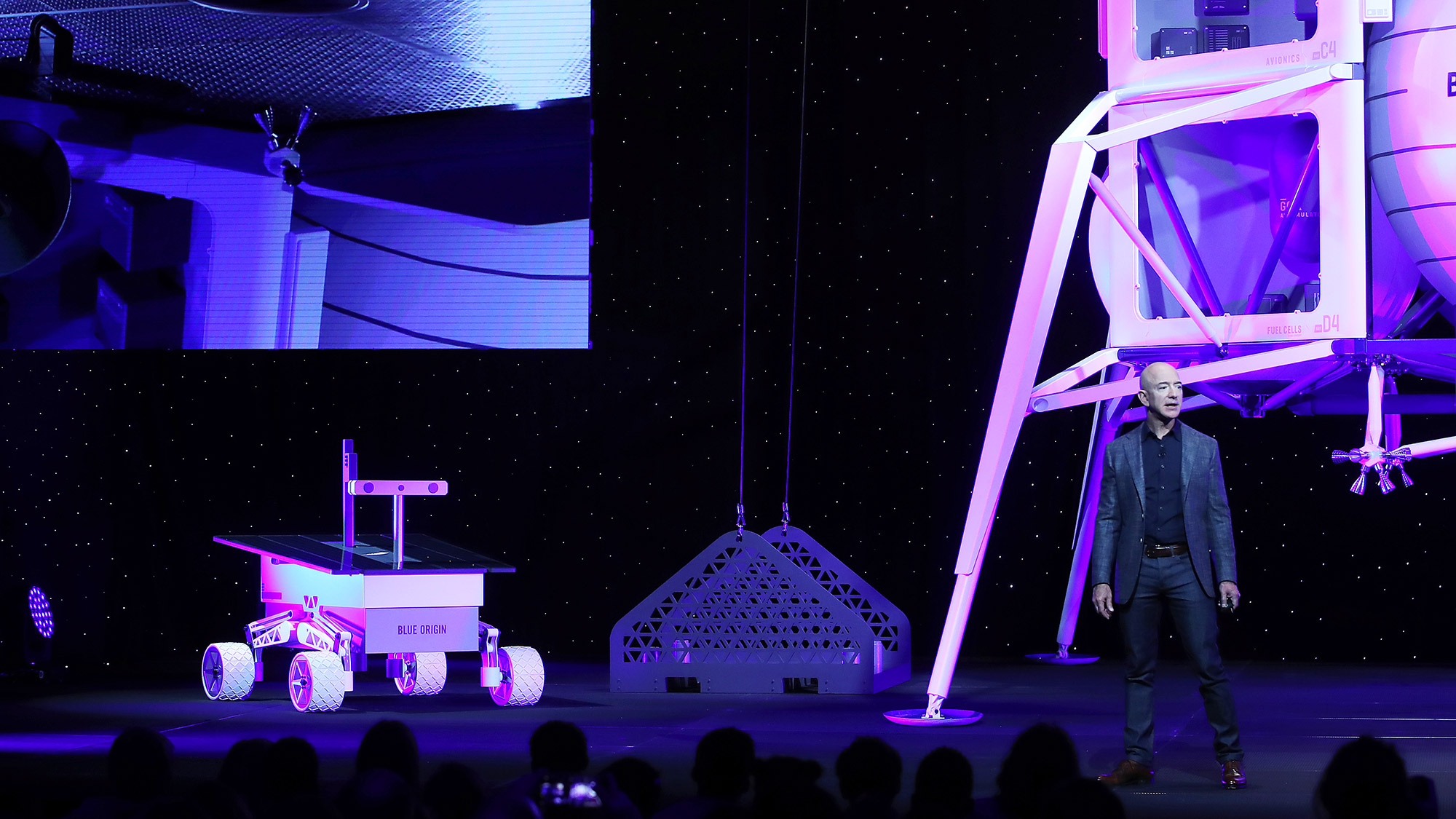
Moon Rover
Jeff Bezos shows off Blue Origin's new moon rover and the lander's davits system, a crane-like contraption that will gently lower payloads from the top of the spacecraft down to the lunar surface.
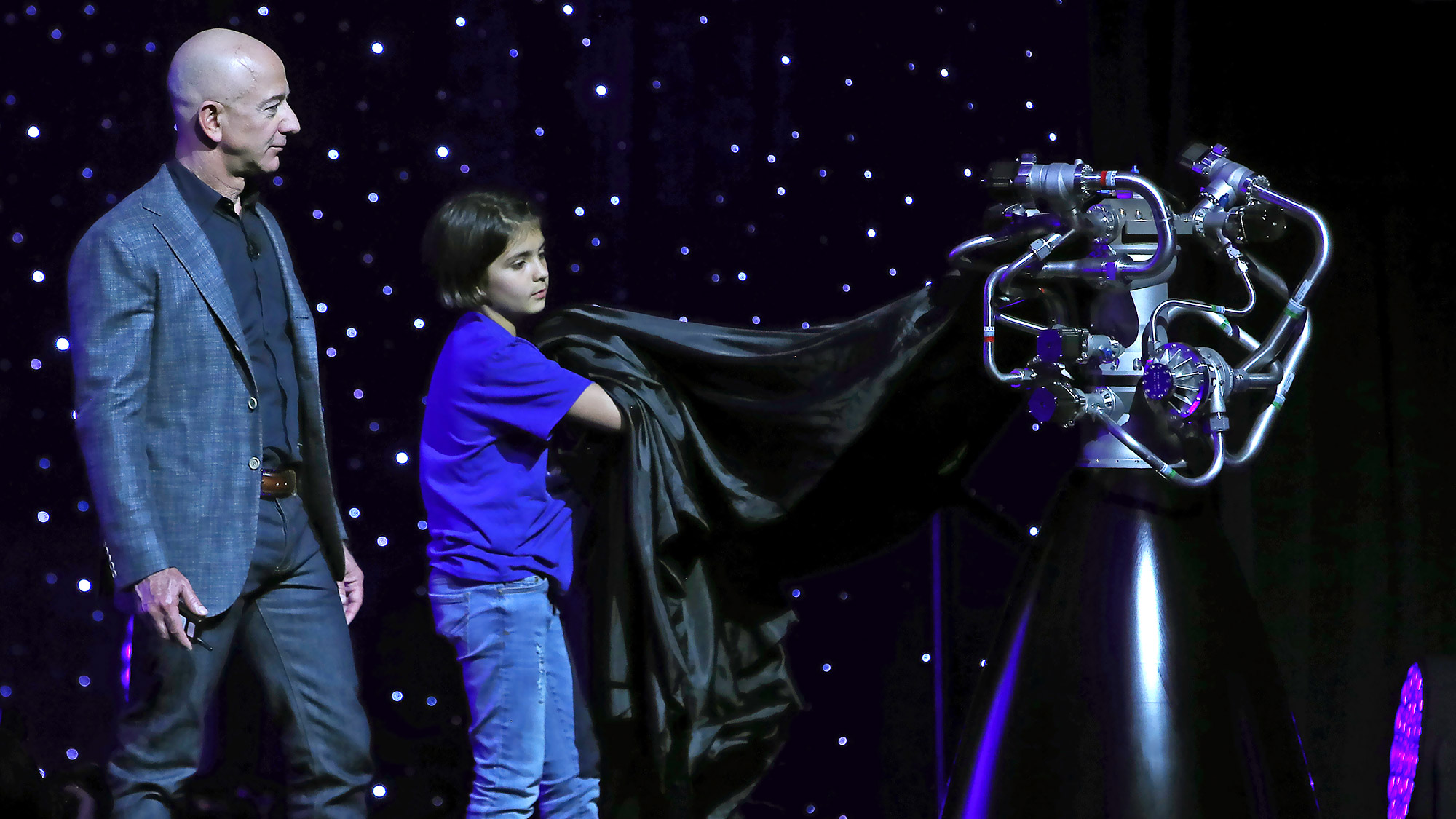
BE-7 Engine Revealed
At the grand revealing of the Blue Moon lunar lander, Bezos (with help from a student in the audience) also unveiled the new BE-7 engine that will power the lunar lander.
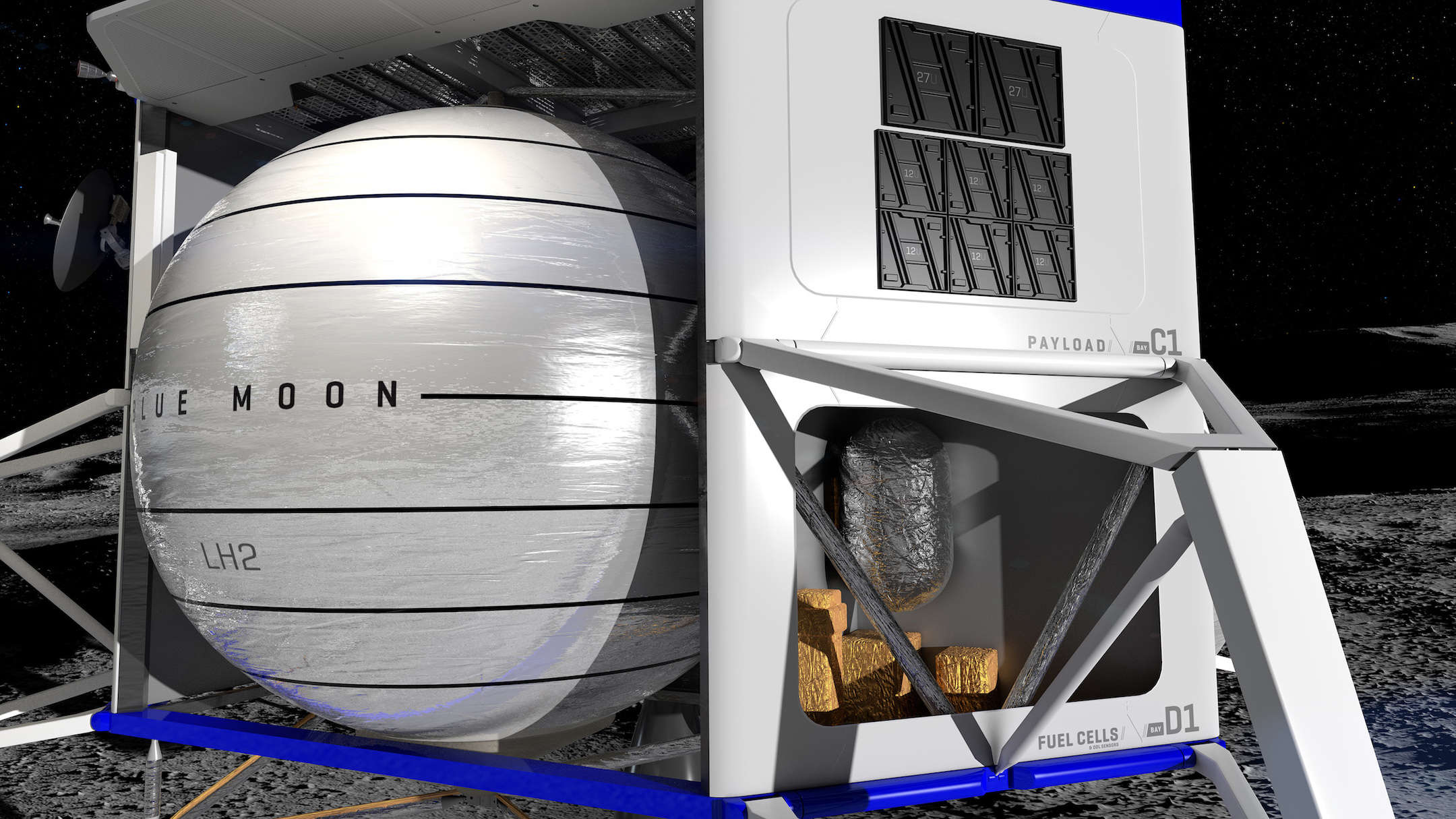
Liquid Hydrogen
That large, spherical container on the Blue Moon lunar lander is its liquid hydrogen fuel tank. To its right are the fuel cells, which will help power payloads through the long lunar nights (which last about two weeks).
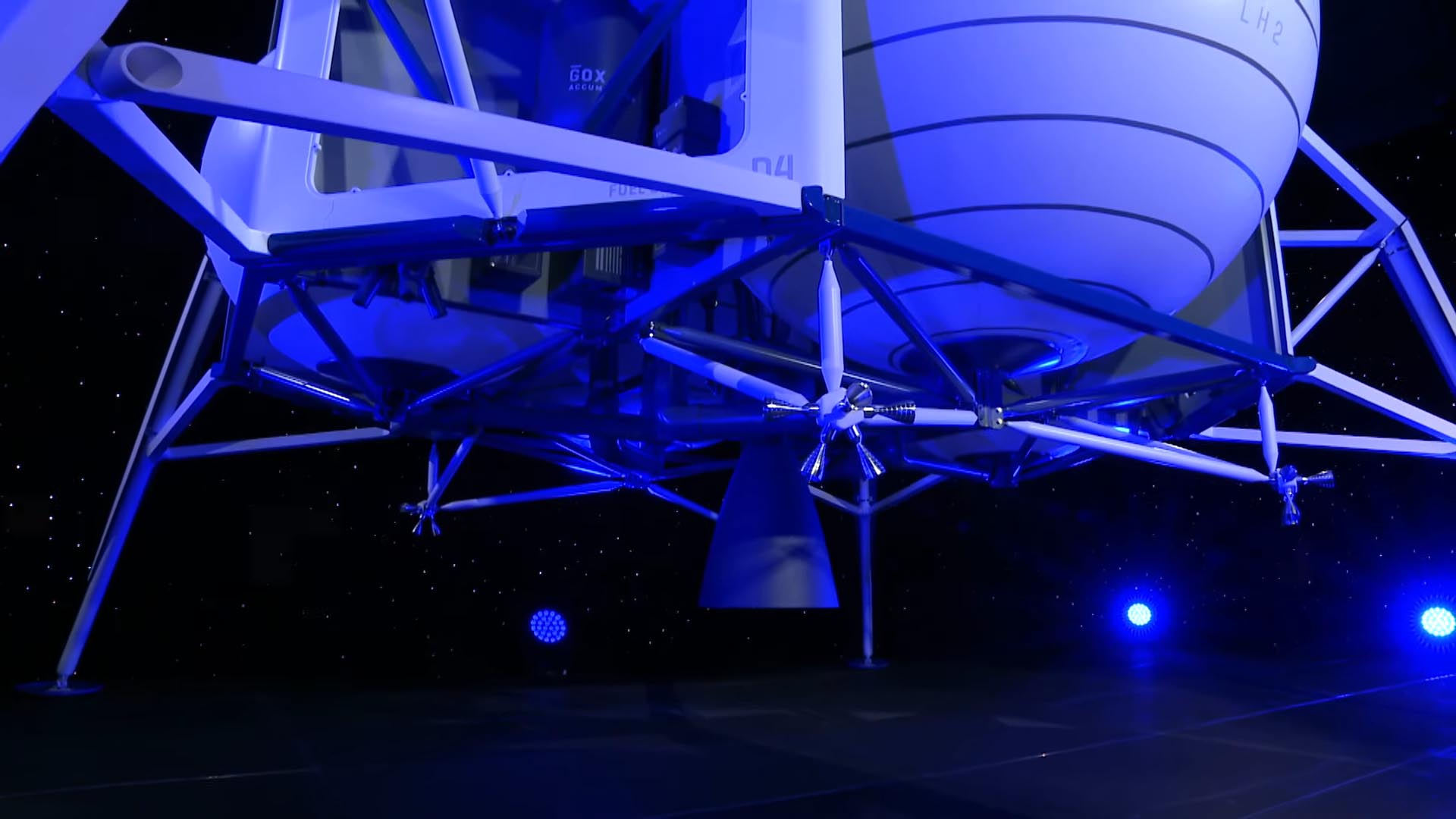
Lidar Navigation
Underneath the Blue Moon is a flash lidar device, which will allow the spacecraft to navigate autonomously by looking at features on the lunar surface.
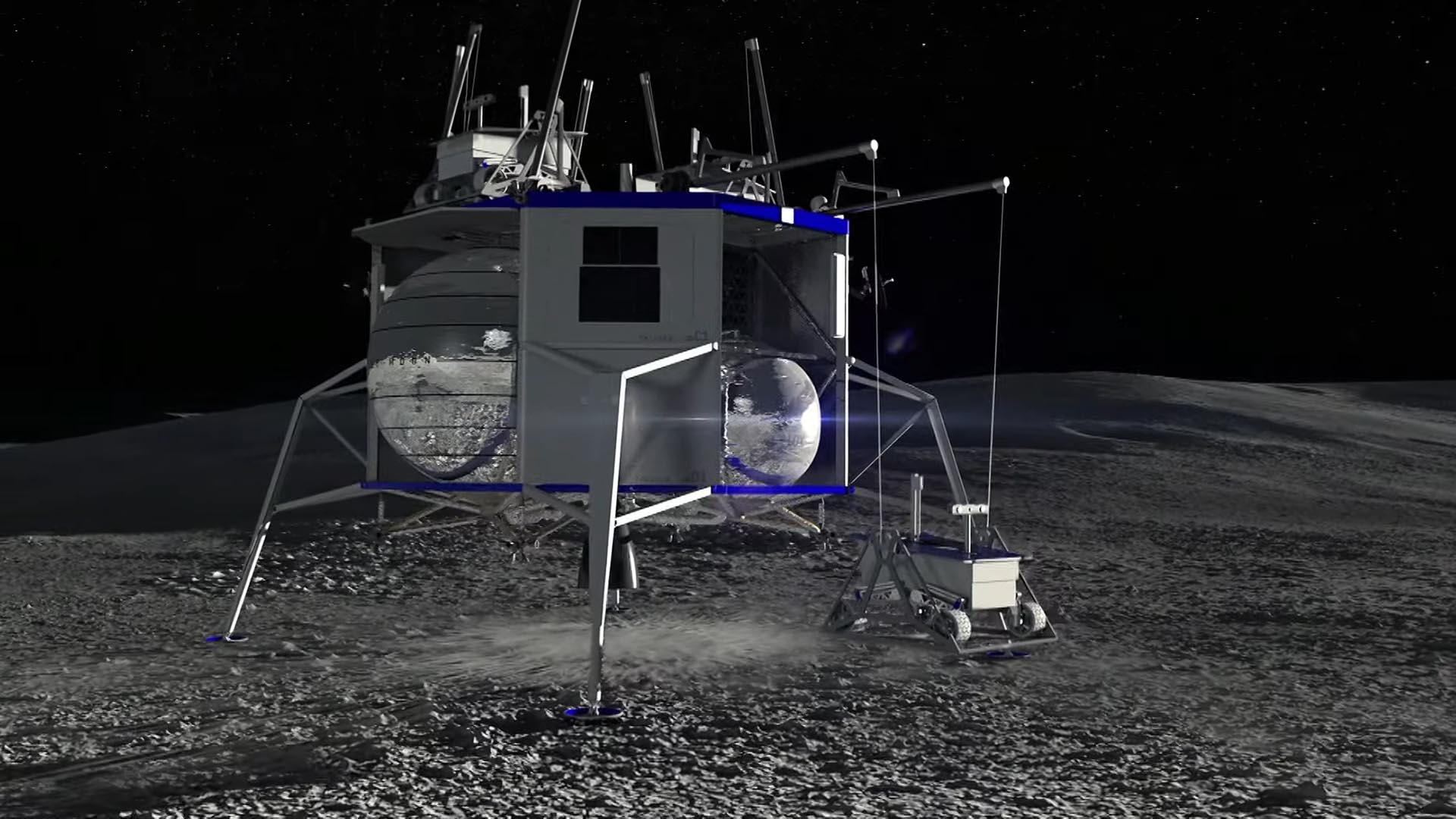
The Davit System
A still image from Blue Origin's mission simulation shows the Blue Moon lunar lander deploying a rover on the moon using the davit system.
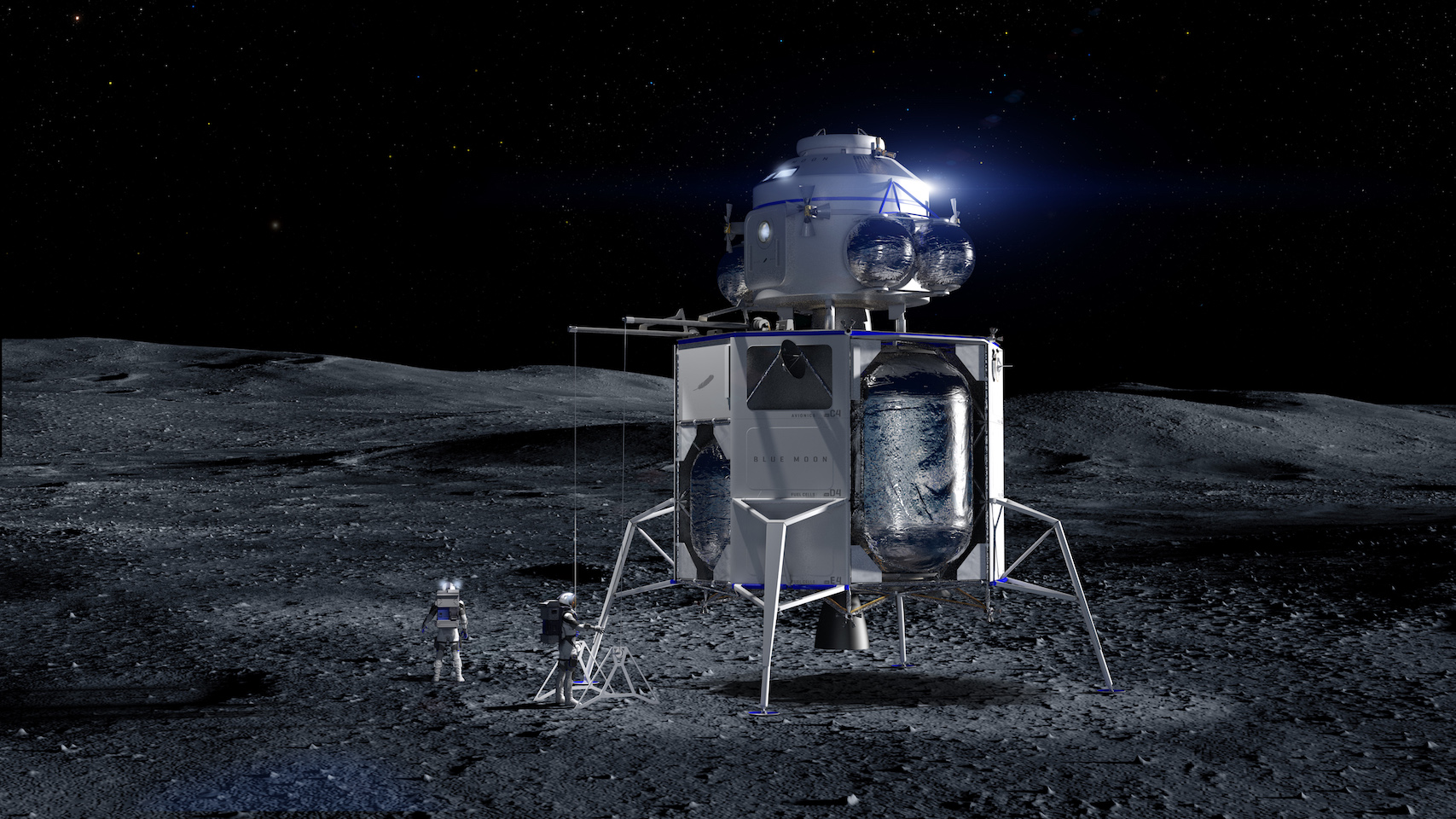
A Modified Blue Moon
A "stretched tank" variant of the Blue Moon lunar lander is topped a pressurized ascent module for astronauts.
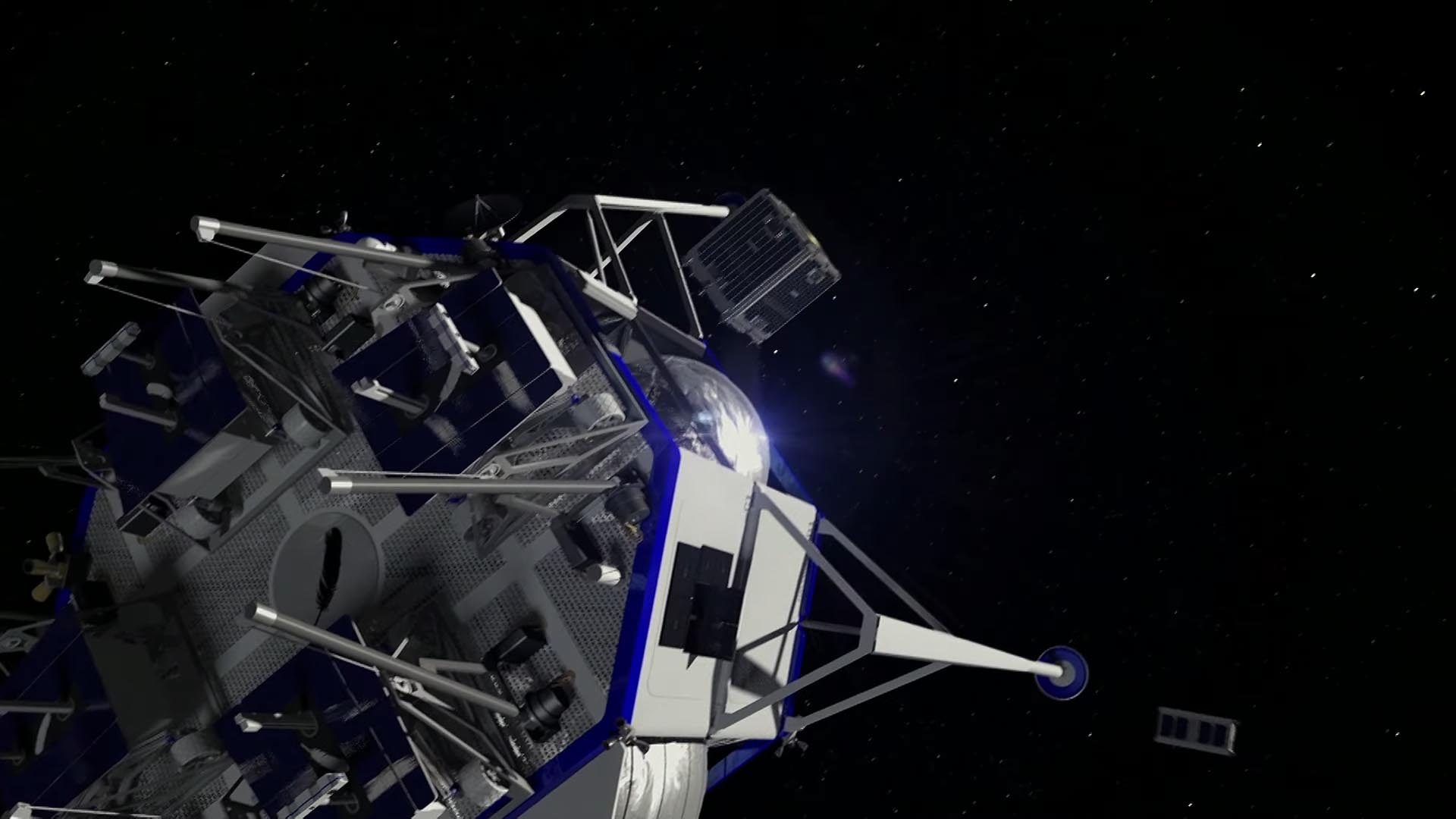
A 'Bonus' Mission
As a "bonus mission," Bezos said, Blue Moon can also deploy small satellites into lunar orbit before landing on the surface. Here you can see two small satellites being ejected into space.
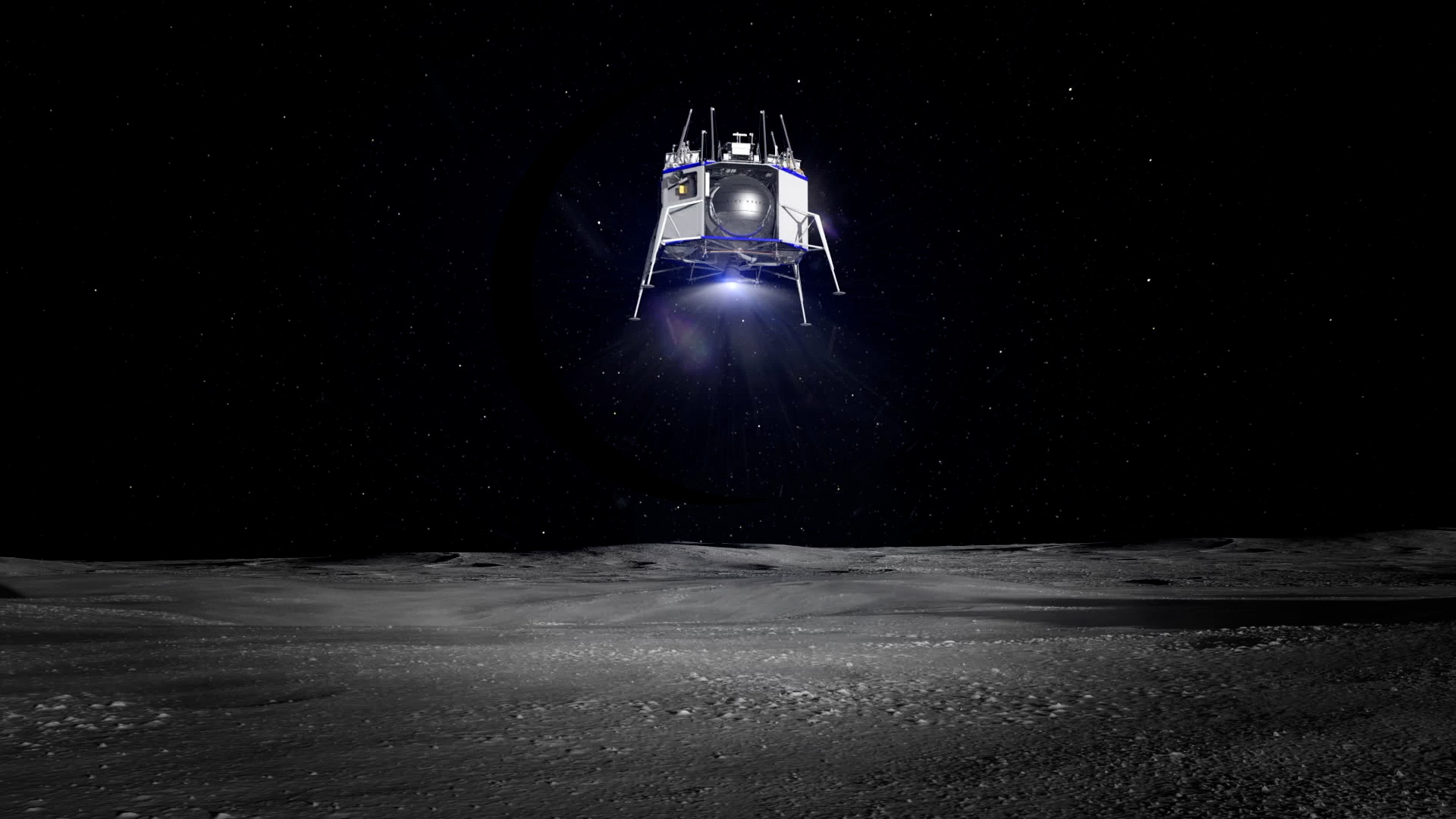
A Controlled Descent
Blue Origin's Blue Moon spacecraft descends to the lunar surface in this still from a mission simulation. The lander is designed to touch down within 75 feet (23 meters) of its target. That kind of accuracy is enabled by the spacecraft's lidar navigation system.

Hanneke Weitering is a multimedia journalist in the Pacific Northwest reporting on the future of aviation at FutureFlight.aero and Aviation International News and was previously the Editor for Spaceflight and Astronomy news here at Space.com. As an editor with over 10 years of experience in science journalism she has previously written for Scholastic Classroom Magazines, MedPage Today and The Joint Institute for Computational Sciences at Oak Ridge National Laboratory. After studying physics at the University of Tennessee in her hometown of Knoxville, she earned her graduate degree in Science, Health and Environmental Reporting (SHERP) from New York University. Hanneke joined the Space.com team in 2016 as a staff writer and producer, covering topics including spaceflight and astronomy. She currently lives in Seattle, home of the Space Needle, with her cat and two snakes. In her spare time, Hanneke enjoys exploring the Rocky Mountains, basking in nature and looking for dark skies to gaze at the cosmos.
